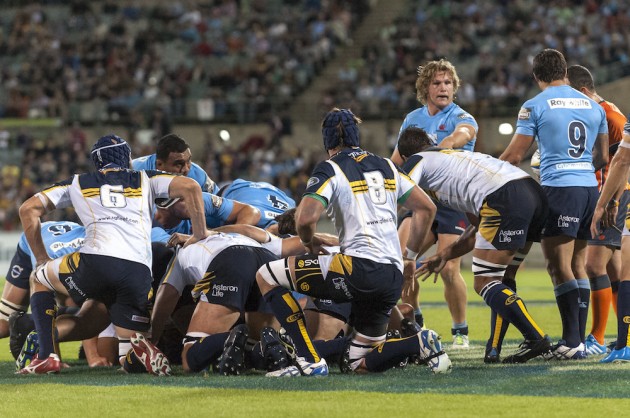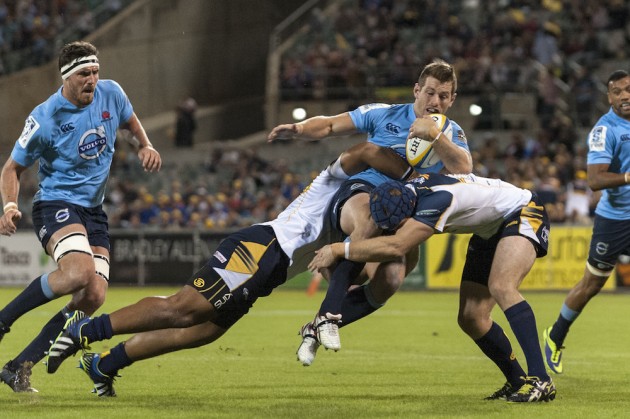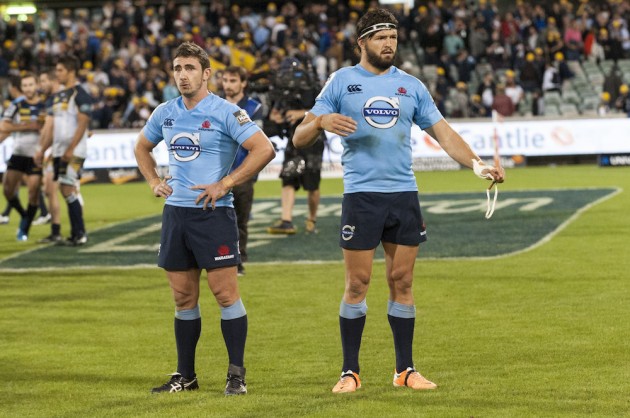Scheduled Website Maintenance
We’re currently in the process of moving to a new and improved server environment. During this transition, the website may experience brief interruptions or temporary outages.
We appreciate your patience while we complete this upgrade. Service will return to normal shortly, with improved performance and reliability.
Thank you for your understanding.
Sometimes, losses just happen. Teams have bad days. One play decides a match. The ball bounces funnily (just ask the Stormers after Lady Luck sided big time with the Chiefs on Friday night).
Other times, losses reveal real weaknesses in a team. That is exactly what happened in Canberra on Saturday night, as the Brumbies constructed a template for how to beat the Tahs that every team will be watching closely.
The set piece
The Tahs got monstered. Despite having one of the biggest and most experienced packs in the competition, two scrums were won against the head, one when the Brumbies had only 14 guys on the field and were five metres out from their line.
At the lineout, the Brumbies won three of the Tahs’ throws. Even then, the stats don’t show the full story: the Tahs ball was often messy. One lineout caught by Benn Robinson, of all people, and flung on the bounce into the 10 channel was representative of a wider farce.
The playmakers
Which brings us to the second point: lack of execution of skills. Bernard Foley had a very poor game at 10, with numerous sliced kicks and a bombed try. That being said, playing Beale at 12 is a huge liability; he can neither defend that channel strongly, nor take a crash ball. He’s not a 12, never has been a 12, and pretending that can play there doesn’t change those facts.
If the Tahs persist with playing him there, expect Mitch Inman, Francois Steyn, and Damien de Allende to just copy the Brumbies approach and run straight and hard at him all match. One of the problems the team has it that both Foley and Beale are actually better runners than they are distributors. They don’t complement each other so much as they double down on a given skill set. Sometimes, like last week, that bet comes up trumps. Sometimes it doesn’t.
Game-plan
Third, if the team as a whole didn’t execute simple skills, it didn’t execute the game plan either. It’s pretty obvious what the Tahs’ strategy was: bash it up through forward runners a little wider than customary, providing space for the backs. This was not much different from the game plan either earlier this season or the second half of last.
However, I lost count of the number of times Nick Phipps looked up from a ruck expecting the play to be going one way, only to find Bernard Foley in a completely different place from where he expected. The 9-10 combination was, frankly, completely dysfunctional. Forward pods didn’t seem to know where they were meant to be: the Folau try illuminated the deficiencies of the Tahs’ play on the night – can a team get any narrower? – as much as it did the strengths.
In the final quarter, the Tahs received four straight penalties in the middle of the field 15-30 metres out. Twice they went for the tap, once a scrum, and once a lineout. All of these options are valid in the situation. But with all other things being equal (and save for a yellow card, they were) the decision should be the same every time, as per the game plan. If the lineout is the designated option, then it should be four lineouts. If the scrum, then four scrums. A motley crew of options just underlines the insufficiencies of the game plan.
More to the point, there was very little Plan B. The Brumbies effectively employed a rush defence. The Tahs could have countered through going wide early and going around the defence (a tactic used by the Chiefs on Friday night to good effect). In the second half, a beautiful Kurtley Beale ball duly found Peter Betham with acres of room to move. There had to be more of that.
Another solution might have been to employ the cross kick into the space behind and wide – especially with the diminutive Robbie Coleman on one wing and Andrew Smith playing out of position on the other. A further idea may have been to tie the Brumbies defence in tighter through pick-and-drives, or occasionally putting Folau in behind the ruck to draw the defence’s attention there.
Decision making
Finally, and not for the first time in recent Tah history, there was an all too visible lack of good on-field decision-making (Lote v Sam Norton-Knight springs to mind). Why with four minutes remaining did the Tahs receive the kick-off and kick the ball out instead of running it, giving the ball back to the Brumbies? This might be an option if they’d been all over the Brumbies’ lineout or had kicked well all evening, but the opposite was the case.
Similarly, why, when needing two scores to win and with the opposition having a player in the bin, would you choose to scrum, giving the opposition a chance to soak up time (the exact same scenario played out in Dunedin, where the Force hung on against the Highlanders)? Why, given the real success little kicks in behind the defence had in the first five minutes, did we not see another one the whole game?
Together, these are major problems for the team. The Tahs did a lot of good things and were right in with a chance of winning the match. Jacques Potgieter continues to look like the best signing in the comp, getting over the advantage line with every carry. Their work at the ruck was, overall, of a very high calibre. Their use of runners coming around the corner on the angle caused the Brumbies huge problems in defence.
But these four broader shortcomings aren’t about to disappear. This is a major wake up call for the Tahs – not an aberration.
Photos courtesy of Tim Anger




